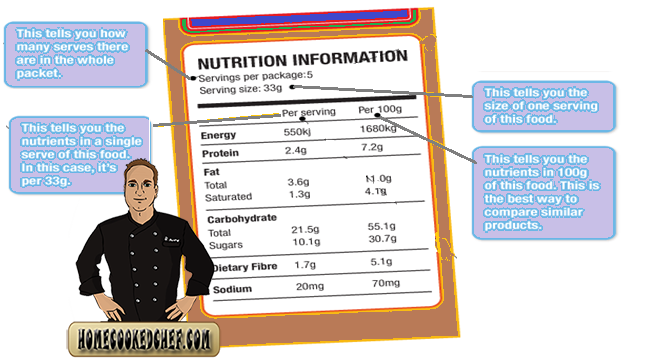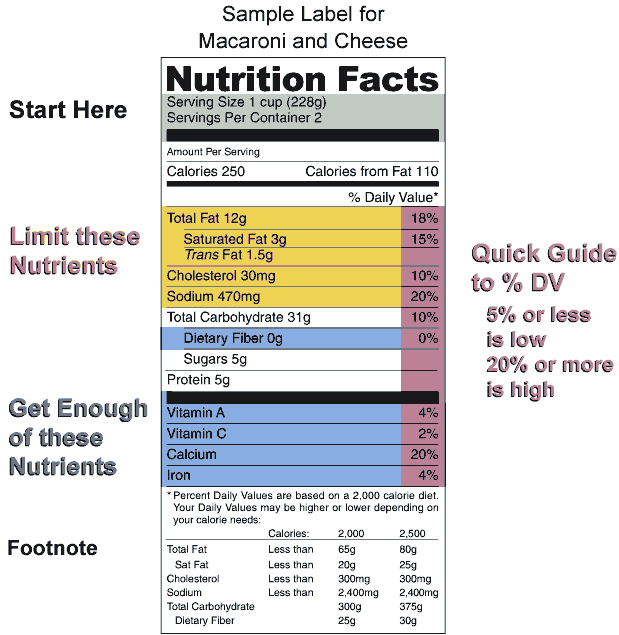Even though food labels are written in plain English, trying to figure out just what’s written on one can be quite the daunting task.

Misunderstanding what they mean is common too, and that can often damage your health. Some greedy and unscrupulous manufacturers rely on these misunderstandings to market their products as being essential for an improved and healthy lifestyle, which is often far from the truth.
What’s The Difference Between Natural And Organic?
“Natural” and “Organic” are terms that have been abused often as these terms are equated with healthy food by many. Foods that are labeled as being “Natural” are those which have been manufactured using ingredients found in nature; all of these ingredients are not healthy. A product can be “Natural” but still have a tremendously high fat, calorie, salt or sugar content.
Similar, items that carry the “Organic” label are those which have been produced using natural fertilizers and pesticides; even though an organic product might have some benefits over the non organic version of the same item, it can still be bad for your health. Organic white sugar has the same negatives as non organic white sugar. Similarly, an organic fruit juice might still contain a lot of “organic” sugar.
Is It Fat Free Or Is It Low Fat
“Fat free” and “low fat” are another two terms that are often abused. Even though they will have a lower fat content, the manufacturers might have added other substances to maintain the taste that might damage your health. Often such foods also have a higher than usual salt and sugar content.
So is there anything you can do to avoid being conned?
The Nutrition Label On Foods
A nutrition label is mandatory for almost all packaged foods; it carries the nutritional content and the ingredients list.
Arm yourself with a basic functioning knowledge regarding the information contained in the food labels, and make sure that the food items you have payed for will indeed help you in achieving your goal of a healthy lifestyle.
So What’s On A Label

Serving size
The size of a single serving is mentioned at the top of the nutrition chart. Knowing the serving size is essential for calculating the nutrients and calories you will consume.
Percentage of daily value (%DV)
Percentage of daily value informs you of the amount of each nutrient contained in one serving compared with the daily intake value (based on a diet of 2,000 calories) of that nutrient as recommended by the FDA.
Your personal daily requirement can differ and depends on factors such as age, daily activity and gender.
A content lower than 5%DV of a single nutrient means that the food item has a low content of that nutrient.
A food is considered to be rich in a particular nutrient if the %DV of that nutrient is higher than 20%.
Nutrients
The Following nutrients are vital for your health, the ones that you should consume more:
Vitamins A
Vitamins C
Potassium
Fiber
Calcium
Foods that contain a high %DV of these nutrients will help you achieve a healthy lifestyle. Nutrients such as cholesterol, fats and sodium should be eaten in moderation.
Foods that contain high %DV of dietary fiber and low %DV of cholesterol, fats and sodium will help you lower the risk of heart disease.
However, there are different types of fats, not all are bad.
Opt for foods with more unsaturated fats and lesser saturated fats.
Trans fats should ideally not be consumed at all.
Similarly for cholesterol, high-density lipoprotein (HDL) helps reduce the risk of heart disease while low-density lipoprotein (LDL) increases it.
A higher than recommended sodium content increases the risk of several diseases. Always check the label for the sodium content as many foods have a high %DV without tasting salty.

